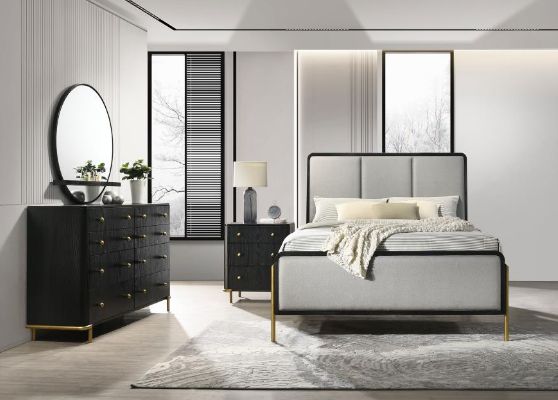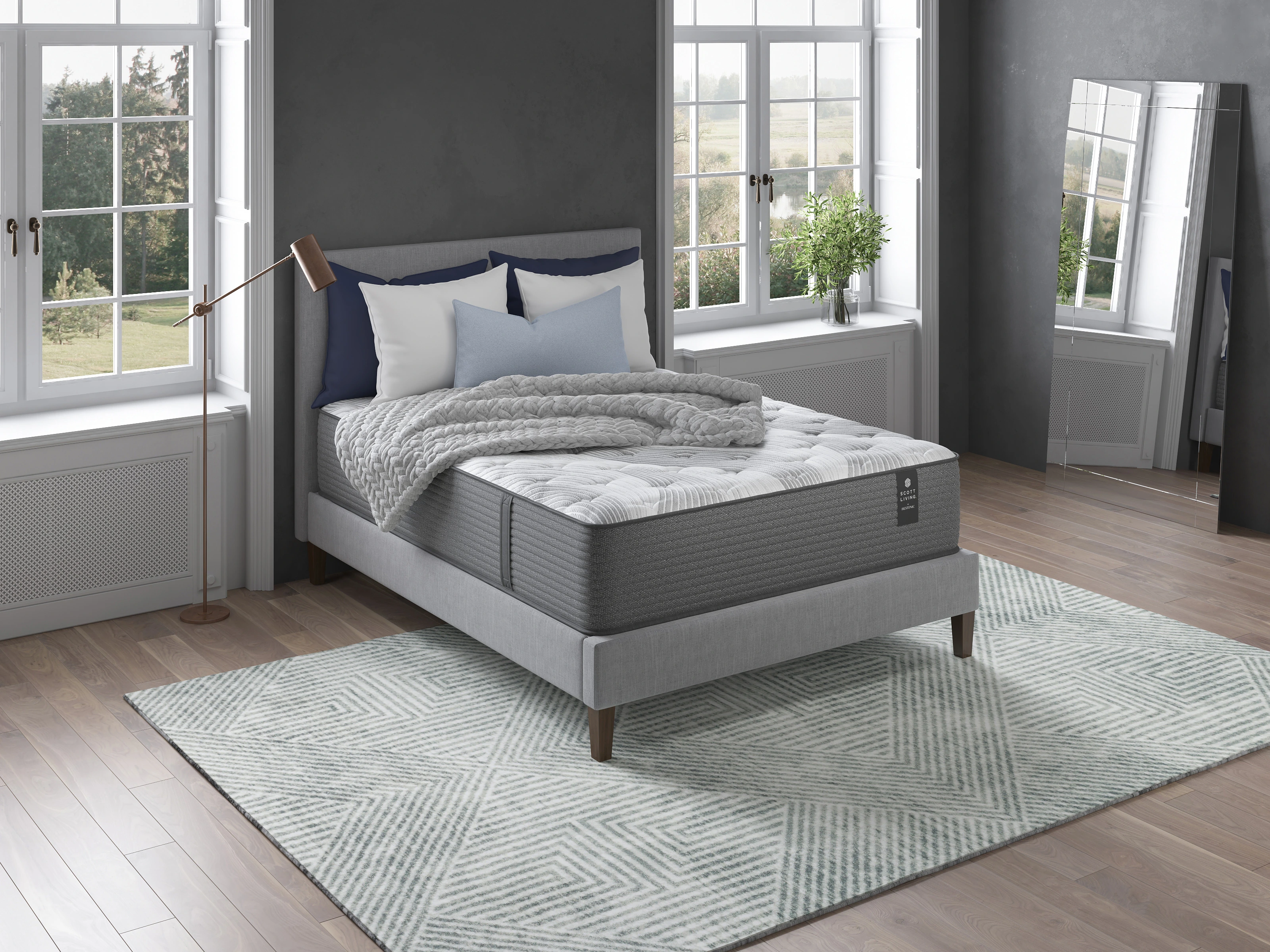All Categories
Featured
When embellishing a home, choosing the appropriate furniture style plays a crucial role in shaping the ambiance of an area. Two of the most preferred furniture designs are contemporary and conventional, each with its distinct attributes.
Standard Furniture: Conventional furniture embraces ornate layouts, intricate carvings, and classic types motivated by previous historical periods. This style is abundant carefully, frequently featuring bent lines, rolled arms, and ornamental flourishes. Typical furnishings has an official, innovative look, and the focus gets on fine craftsmanship. Parts usually include elements like claw-foot legs, attractive moldings, and natural leather furniture, producing an elegant, ageless feel in any area.
![]()
Typical Furnishings: Standard furnishings is understood for its usage of abundant, premium products such as solid timber, natural leather, and natural fabrics. Standard furnishings finishes often tend to be sleek and dark, giving pieces a sense of weight and luxury.
Typical Furniture: Conventional furniture usually utilizes deeper, richer shades that stimulate a feeling of heat and elegance. Natural tones like deep browns, wine reds, golds, and woodland eco-friendlies are frequently seen in traditional furnishings. These shades include a sense of comfort and splendor to the space. Furthermore, patterns are often utilized in conventional furnishings, such as floral prints, red stripes, or damask, adding depth and appearance to the area's style.
![]()
Conventional Furniture: While comfort is crucial in typical furnishings, it is not always the key emphasis. Conventional furnishings highlights high-end and elegance, frequently including cushioned seats and thick upholstery. The emphasis on craftsmanship and style ensures that items are not just comfy yet likewise visually striking. Standard furniture is developed to last and typically includes heavy, sturdy building. The convenience of standard furniture is extra regarding creating an inviting and ageless space than making the most of versatility and multi-functionality.
![]()
Standard Furnishings: Conventional furnishings tends to stand out more in a room due to its classic and luxuriant design aspects. While it can be blended with modern elements for an upgraded look, standard furnishings generally maintains its very own identification and can really feel leading within a room.
Standard Furniture: Traditional furniture is constructed to last and never ever heads out of style. Its timeless layouts have held up against the test of time, and the top quality of materials and workmanship guarantee that these pieces are passed down with generations. For homeowners looking for enduring, classic furniture that preserves its value and beauty, conventional pieces are a terrific financial investment. The resilience and workmanship of typical furniture make sure that it preserves its style and allure for several years.
Verdict. Eventually, the choice between contemporary and traditional furniture comes down to your personal choices and the type of environment you desire to develop in your home. Contemporary furniture is smooth, useful, and versatile to current patterns, while standard furnishings is classic, lavish, and concentrated on elaborate information. By comprehending the vital distinctions in between these two styles, you can better curate a home that reflects your preference, way of living, and the setting you desire.
- Design and Shape. Contemporary Furniture: Contemporary furnishings is understood for its sleek, minimalist designs that prioritize simplicity and performance. The lines are sharp and frequently clean, with an emphasis on geometric shapes and smooth, smooth surface areas. This design mirrors the trends of the present and is ever-evolving. Modern furnishings can integrate aspects from various durations, making it extremely versatile. Common features include low-profile styles, open spaces, and furnishings that tends to have a streamlined appearance.
Standard Furniture: Conventional furniture embraces ornate layouts, intricate carvings, and classic types motivated by previous historical periods. This style is abundant carefully, frequently featuring bent lines, rolled arms, and ornamental flourishes. Typical furnishings has an official, innovative look, and the focus gets on fine craftsmanship. Parts usually include elements like claw-foot legs, attractive moldings, and natural leather furniture, producing an elegant, ageless feel in any area.

- Materials and Finishes. Contemporary Furniture: Contemporary furniture uses a diverse range of products, including wood, glass, metal, acrylic, and sometimes leather. While modern furniture does include wood, the materials tend to be lighter and less ornate contrasted to standard items.
Typical Furnishings: Standard furnishings is understood for its usage of abundant, premium products such as solid timber, natural leather, and natural fabrics. Standard furnishings finishes often tend to be sleek and dark, giving pieces a sense of weight and luxury.
- Color Scheme. Contemporary Furnishings: Contemporary furniture welcomes neutral, downplayed shades, with tones like white, gray, black, and off-white frequently included. The shade palette in contemporary furnishings is frequently maintained basic to permit other design aspects to beam, developing a cohesive and well balanced space.
Typical Furniture: Conventional furniture usually utilizes deeper, richer shades that stimulate a feeling of heat and elegance. Natural tones like deep browns, wine reds, golds, and woodland eco-friendlies are frequently seen in traditional furnishings. These shades include a sense of comfort and splendor to the space. Furthermore, patterns are often utilized in conventional furnishings, such as floral prints, red stripes, or damask, adding depth and appearance to the area's style.
- Comfort and Performance. Contemporary Furnishings: Functionality is a main component of modern furniture. Pieces are usually made with ergonomic principles in mind to maximize comfort and energy. This style incorporates multi-functional furniture, such as sleeper sofa, modular systems, or furniture with integrated storage space, which makes them useful for modern way of livings. Contemporary furniture additionally often tends to have much less decoration, which permits it to blend effortlessly into various kinds of rooms without overpowering the area.

Conventional Furniture: While comfort is crucial in typical furnishings, it is not always the key emphasis. Conventional furnishings highlights high-end and elegance, frequently including cushioned seats and thick upholstery. The emphasis on craftsmanship and style ensures that items are not just comfy yet likewise visually striking. Standard furniture is developed to last and typically includes heavy, sturdy building. The convenience of standard furniture is extra regarding creating an inviting and ageless space than making the most of versatility and multi-functionality.
- Design Combination. Contemporary Furnishings: Contemporary furniture is designed to fit with the patterns of the time, and as an outcome, it works well in modern-day and minimal areas. Because modern furniture welcomes simplicity, it can likewise be combined with even more conventional pieces to develop an eclectic appearance.

Standard Furnishings: Conventional furnishings tends to stand out more in a room due to its classic and luxuriant design aspects. While it can be blended with modern elements for an upgraded look, standard furnishings generally maintains its very own identification and can really feel leading within a room.
- Long life and Timelessness. Contemporary Furniture: Contemporary furnishings, as a result of its connection to current design trends, can sometimes feel dated as trends advance. Nevertheless, its clean, minimal visual and use of top notch products commonly guarantee it remains pertinent for numerous years, specifically when it focuses on classic modernist components. While contemporary furniture may not have the very same historical weight as typical items, it can still stand the examination of time through its adaptability and ongoing adaptation to new trends.
Standard Furniture: Traditional furniture is constructed to last and never ever heads out of style. Its timeless layouts have held up against the test of time, and the top quality of materials and workmanship guarantee that these pieces are passed down with generations. For homeowners looking for enduring, classic furniture that preserves its value and beauty, conventional pieces are a terrific financial investment. The resilience and workmanship of typical furniture make sure that it preserves its style and allure for several years.
Verdict. Eventually, the choice between contemporary and traditional furniture comes down to your personal choices and the type of environment you desire to develop in your home. Contemporary furniture is smooth, useful, and versatile to current patterns, while standard furnishings is classic, lavish, and concentrated on elaborate information. By comprehending the vital distinctions in between these two styles, you can better curate a home that reflects your preference, way of living, and the setting you desire.
Latest Posts
Uncover the Best Auto Repair Deals in Montclare, Chicago
Published May 27, 25
1 min read
How to Know When Your Car Needs Skilled Auto Repair at Montclare Auto Repair
Published May 27, 25
1 min read
The Benefits of Regular Car Maintenance at Montclare Auto Repair Reduces Costs
Published May 22, 25
1 min read
More
Latest Posts
Uncover the Best Auto Repair Deals in Montclare, Chicago
Published May 27, 25
1 min read
How to Know When Your Car Needs Skilled Auto Repair at Montclare Auto Repair
Published May 27, 25
1 min read
The Benefits of Regular Car Maintenance at Montclare Auto Repair Reduces Costs
Published May 22, 25
1 min read